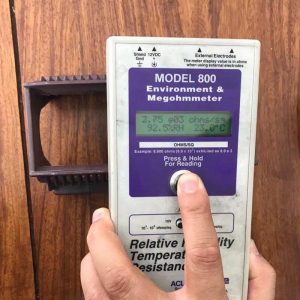The validity period of an anti static material usually refers to the period during which it maintains effective antistatic properties.
Anti static materials can reduce or eliminate the accumulation and discharge of static electricity. However, with time, changes in the use environment (such as temperature, humidity, friction frequency, etc.), and the aging of the material itself, its antistatic performance may gradually decline. When the performance of an antistatic material declines to a certain extent and cannot meet the expected antistatic requirements, it can be considered that its validity period has expired. In practical applications, determining the length of the validity period of an antistatic material requires comprehensive consideration of multiple factors such as the type, quality, use conditions, and specific application scenarios of the material.

Factors affecting the validity period of anti-static materials
First, the type and quality of the anti-static material will significantly affect its effectiveness. Some high-quality, high-performance antistatic materials may maintain good antistatic properties for a long time; while materials with poor quality or insufficiently designed designs may have their antistatic effects decline faster.
Secondly, the use environment is one of the key factors. In harsh environments such as high temperature, high humidity, and strong electromagnetic fields, antistatic materials may lose effectiveness more quickly. For example, high temperature may cause the molecular structure of the material to change, thereby affecting its conductive properties; a high-humidity environment may cause the material to absorb moisture and change its electrical properties.
In addition, the frequency and intensity of the use of anti-static materials will also have an impact on timeliness. Frequent and high-intensity friction, contact, and other operations may accelerate the weakening of antistatic performance.
Generally speaking, the timeliness of different antistatic materials varies greatly under different conditions of use. In actual applications, its performance needs to be regularly tested and evaluated according to specific circumstances to ensure that anti-static requirements are met.
Methods to extend the validity period of antistatic materials
- Material selection: Choose high-quality, high-performance, and well-proven antistatic materials. These materials generally have a more stable chemical structure and better electrical conductivity, allowing them to maintain their antistatic effect over a longer period.
- Optimize the use environment: Try to control the temperature, humidity, electromagnetic field, and other factors of the use environment. Maintain appropriate temperature and humidity ranges and avoid extreme conditions. For strong electromagnetic field environments, shielding measures can be taken or anti-static materials with stronger anti-interference capabilities can be used.
- Surface protection: Add a protective coating or film on the surface of antistatic materials to reduce the impact of friction, wear, and chemical erosion on material performance.
- Regular cleaning and maintenance: promptly remove dirt, dust, and pollutants from the surface to prevent them from affecting the conductive properties of the material.
- Avoid excessive use: Reasonably arrange the frequency and intensity of use of anti-static materials, and avoid excessive friction, stretching, and other operations to reduce material performance loss.
- Proper storage conditions: When not in use, store antistatic materials in a dry, ventilated, non-corrosive gas environment, and store them according to the characteristics of the material and the manufacturer’s recommendations.
- Improve processing technology: During the production process, optimized processing technology is adopted to ensure uniform structure and performance of materials and reduce internal defects.
- Composite use: Composite anti-static materials with other reinforcing materials to improve overall stability and durability.
By comprehensively considering and implementing the above measures, the timeliness of anti-static materials can be extended to a certain extent to meet the needs of practical applications.




